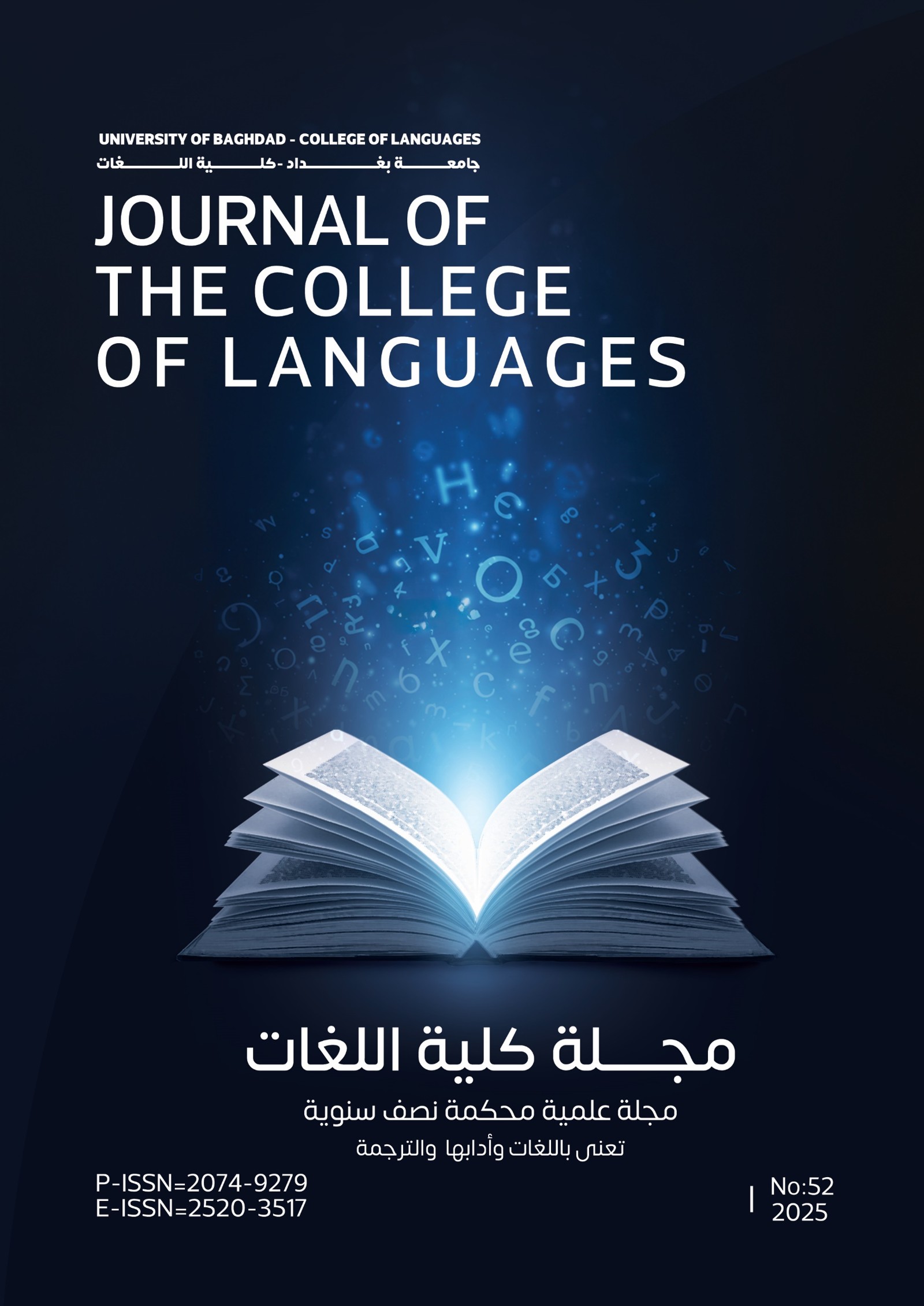Familial Disintegration and its Psychological Impact in Sam Shepard’s Buried Child
DOI:
https://doi.org/10.36586/jcl.2.2025.0.51.0125Keywords:
Communication, Dysfunction, Identity, Instability, IsolationAbstract
Sam Shepard (1943-2017) was an acclaimed American playwright renowned for his exploration of familial themes. His works often examine the complexities and dysfunctions of family life, making him an important figure in modern theatre. Buried Child (1978), one of his most significant plays, won the Pulitzer Prize for Drama in 1979. The play stands out for its dark, surreal portrayal of the family narrative, setting it apart from more conventional realistic family dramas. The disintegration of the family depicted in Buried Child serves as an example for broader societal issues, emphasising the family’s crucial role as the foundation of society. This study aims to analyse the psychological aspects of familial disintegration in Buried Child, focusing on the reasons behind the family’s breakdown and its psychological impact on its individual members. By applying Murray Bowen’s Family Systems Theory and Sigmund Freud’s concepts of remembering, repeating, and working-through, the study provides a comprehensive understanding of the characters’ dysfunctional behaviours. The research highlights the importance of addressing familial issues, as they influence societal health. Through this analysis, this study stresses the cyclical and multigenerational nature of trauma and the potential for psychological recovery.
References
Abbotson, S. C. W. (2005). Masterpieces of 20th-Century American Drama. Greenwood Press.
Abbott, M. (1994). The Curse of the Misbegotten: The Wanton Son in the Plays of Eugene O’Neill and Sam Shepard. The Eugene O’Neill Review, 18(1/2), 193-198.
Abdullah, M. Q., & Alawi, M. A. (2022). Violence Against Women: Factors and Effects: Analytical Theory Study. AL-Adab Journal, 3(141), 423-436.
Albah, J., & Alothman, H. (2023). Parenting Methods and Their Impact on Children: An Applied Study on the Emirate of Sharjah. AL-Adab Journal, 1(145), 311-342.
Al-Nuaimy, R. S., & Alhelou, B. M. (2021). Battered Woman Syndrome Among Iraqi Women in Baghdad. AL-Adab Journal, 2(138), 183-202.
Altaniji, B. M., & Barhomi, W. O. (2023). The Impact of Domestic Violence on the Deviant Behavior of High Junior Stage Students. AL-Adab Journal, 145, 265-290.
Azeez, R. A. (2022). The Inner Wasteland in Selected Later Plays of Samuel Beckett. Journal of the College of Languages (JCL), 46, 1-24.
Bigsby, C. W. E. (1985). A Critical Introduction to Twentieth-Century American Drama: Beyond Broadway Volume 3. Cambridge University Press.
Bloom, C. (Ed.). (1995). American Drama. Palgrave Macmillan. https://doi.org/978-1-349-24086-9
Bloom, H. (Ed.). (2002). Sam Shepard. Chelsea House.
Bottoms, S. J. (1998). The Theatre of Sam Shepard: States of Crisis. Cambridge University Press.
Cardullo, R. J. (2019). Monologue, Metaphor, and Maelstrom: Sam Shepard’s Curse of the Starving Class and Buried Child Reconsidered. Studies in Popular Culture, 42(1), 53-76. JSTOR. https://www.jstor.org/stable/26926332
Derose, D. J. (1992). Sam Shepard. Twayne.
Dunkling, L., & Gosling, W. (1985). The New American Dictionary of Baby Names. New American Library.
Faraj, K. G. (2024). Evaluating the Efficiency of the Spatial Distribution of Autism Institutes in the City of Baghdad, Al-Rusafa as a Model. AL-Adab Journal, 2(148 Supplement 1), 209-236.
Favorini, A. (2008). Memory in Play: From Aeschylus to Sam Shepard. Palgrave Macmillan.
Hanks, P., Hardcastle, K., & Hodges, F. (2006). A Dictionary of First Names. Oxford University Press.
Heuvel, M. V. (2019). Modern American Drama: Playwriting in the 1970s: Voices, Documents, New Interpretations. Bloomsbury Publishing PLC.
Ismael, N. A. (2013). Dylan Thomas: The Vision of Death as a Prologue to a New Life. Journal of the College of Languages (JCL), 27, 1-13.
Kadhem, N. J. (2008). Fathers and Sons: Family Relationships in Sam Shepard’s Buried Child and True West. Journal of the College of Education for Women, 19(1).
Krasner, D. (Ed.). (2005). A Companion to Twentieth-Century American Drama. Blackwell Publishing.
Marranca, B. (Ed.). (1981). American Dreams: The Imagination of Sam Shepard. PAJ Publications.
Middeke, M., Schnierer, P. P., Sierz, A., & Zi-Lang, A. (Eds.). (2014). The Methuen Drama Guide to Contemporary American Playwrights. Bloomsbury Publishing PLC.
Mir, D. A., & Vijaya, R. (2017). Familial Disintegration: A Study of Sam Shepard’s Buried Child. International Journal of Academic Research and Development, 2(6), 612-615.
Mohammed, R. J., Abdullah, R. H., & Al-Tufaily, Z. H. (2022). Baudrillard’s Theory of Simulation and Death of Real in Buried Child by Sam Shepard. Zien Journal of Social Sciences and Humanities, 11, 34-39.
Roudane, M. C. (Ed.). (2002). The Cambridge Companion to Sam Shepard. Cambridge University Press.
Saddik, A. J. (2007). Contemporary American Drama (M. Halliwell & A. Mousley, Eds.). Edinburgh University Press.
Shepard, S. (1984). Buried Child. In Seven Plays (pp. 61-132). Bantam Books.
Tucker, M. (1992). Sam Shepard. Continuum International Publishing Group.
Downloads
Published
Issue
Section
License
Copyright (c) 2025 Journal of the College of Languages (JCL)

This work is licensed under a Creative Commons Attribution 4.0 International License.








